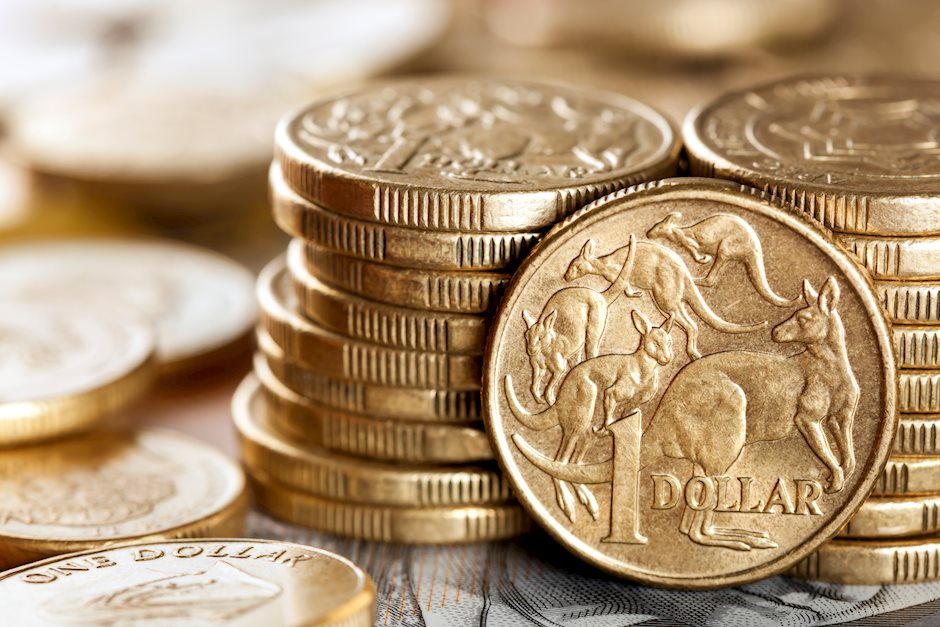Australian Dollar declines as USD recovers
- Upbeat Aussie Employment data strengthens case for RBA to maintain its current interest rate policy.
- Aussie shows little reaction to PBoC's decision to leave interest rates unchanged.
- Fed dovish bets might limit the downside.

The AUD/USD declined by 0.40% to 0.6790 in Friday's session, pressured by growing expectations of interest rate cuts by the Federal Reserve (Fed). The Fed's focus on preventing labor market deterioration has led traders to anticipate a 75-basis-point (bps) decrease in the remaining two Fed policy meetings. The Australian Dollar remained stable despite the People's Bank of China's (PBoC) decision to maintain interest rates unchanged.
Despite the mixed Australian economic outlook, the Reserve Bank of Australia's (RBA) hawkish stance on inflation has led to market expectations of a modest 25-basis-point rate cut in 2024. This signals a shift away from the previously anticipated more aggressive easing cycle due to the persistent inflationary pressures.
Daily digest market movers: Australian Dollar declines, Fed rate cut expectations limit downside
- Fed cut interest rates by 50 bps, signaling further cuts due to labor market concerns.
- Traders anticipate 75 bps of rate cuts in November and December, with a 43% probability of a 50 bps cut in November.
- Australian Dollar remains firm on strong employment data, dampening expectations for RBA rate cuts.
- Australia's August employment report showed a gain of 47.5K jobs, exceeding estimates and supporting the currency.
- China's PBoC left interest rates unchanged with no significant impact on AUD/USD.
AUD/USD technical outlook: Indicators turn flat but outlook remains positive
Around the 0.6800 mark, the AUD/USD indicators turned flat as buyers seem to be locking in gains from the previous session’s upwards movements. With the pair near yearly highs, it may be set to trade sideways in the next several sessions before the next upward leg. In the meantime, indicators turned flat but remain deep in positive terrain with the Relative Strength Index (RSI) near 62.
Australian Dollar FAQs
One of the most significant factors for the Australian Dollar (AUD) is the level of interest rates set by the Reserve Bank of Australia (RBA). Because Australia is a resource-rich country another key driver is the price of its biggest export, Iron Ore. The health of the Chinese economy, its largest trading partner, is a factor, as well as inflation in Australia, its growth rate and Trade Balance. Market sentiment – whether investors are taking on more risky assets (risk-on) or seeking safe-havens (risk-off) – is also a factor, with risk-on positive for AUD.
The Reserve Bank of Australia (RBA) influences the Australian Dollar (AUD) by setting the level of interest rates that Australian banks can lend to each other. This influences the level of interest rates in the economy as a whole. The main goal of the RBA is to maintain a stable inflation rate of 2-3% by adjusting interest rates up or down. Relatively high interest rates compared to other major central banks support the AUD, and the opposite for relatively low. The RBA can also use quantitative easing and tightening to influence credit conditions, with the former AUD-negative and the latter AUD-positive.
China is Australia’s largest trading partner so the health of the Chinese economy is a major influence on the value of the Australian Dollar (AUD). When the Chinese economy is doing well it purchases more raw materials, goods and services from Australia, lifting demand for the AUD, and pushing up its value. The opposite is the case when the Chinese economy is not growing as fast as expected. Positive or negative surprises in Chinese growth data, therefore, often have a direct impact on the Australian Dollar and its pairs.
Iron Ore is Australia’s largest export, accounting for $118 billion a year according to data from 2021, with China as its primary destination. The price of Iron Ore, therefore, can be a driver of the Australian Dollar. Generally, if the price of Iron Ore rises, AUD also goes up, as aggregate demand for the currency increases. The opposite is the case if the price of Iron Ore falls. Higher Iron Ore prices also tend to result in a greater likelihood of a positive Trade Balance for Australia, which is also positive of the AUD.
The Trade Balance, which is the difference between what a country earns from its exports versus what it pays for its imports, is another factor that can influence the value of the Australian Dollar. If Australia produces highly sought after exports, then its currency will gain in value purely from the surplus demand created from foreign buyers seeking to purchase its exports versus what it spends to purchase imports. Therefore, a positive net Trade Balance strengthens the AUD, with the opposite effect if the Trade Balance is negative.
Author

Patricio Martín
FXStreet
Patricio is an economist from Argentina passionate about global finance and understanding the daily movements of the markets.

















